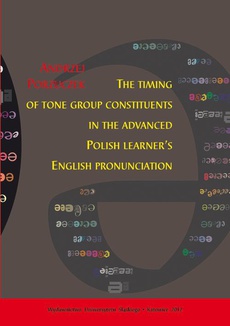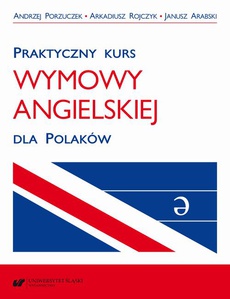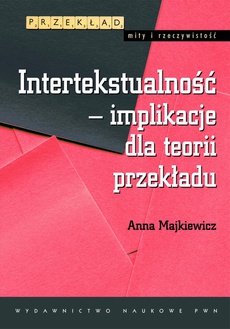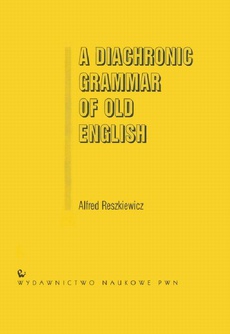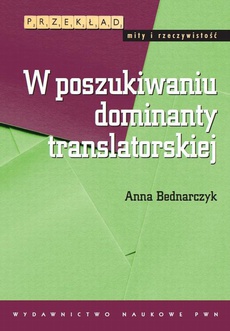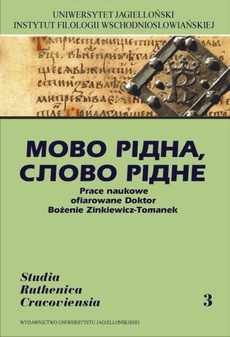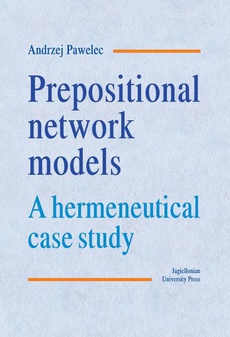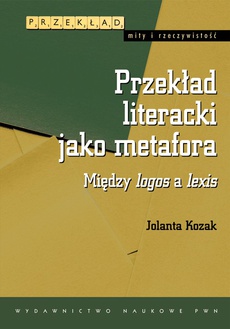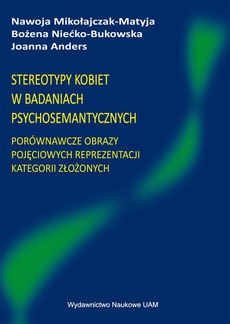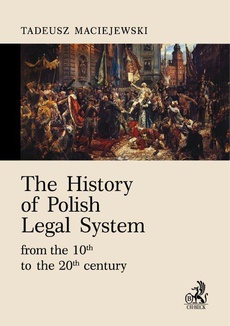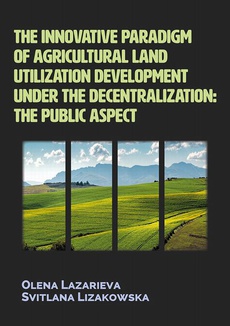INNE EBOOKI AUTORA
The timing of tone group constituents in the advanced Polish learner's English pronunciation
Autor:
Wydawca:
Format:
Książka Andrzeja Porzuczka poświęcona jest analizie relacji czasowych pomiędzy elementami frazy intonacyjnej w wymowie angielskiej zaawansowanego ucznia polskiego. Celem autora było wykazanie i opisanie różnic w tym zakresie między polskim uczniem a rodzimym użytkownikiem języka angielskiego oraz ich interpretacja w kontekście glottodydaktycznym.
Część teoretyczna pracy (rozdziały 1—3) omawia historię i stan badań nad prozodią języka mówionego oraz metodologię akustycznych badań mowy. Część praktyczna natomiast (rozdziały 4—7) przedstawia oparte na dyskusji z części teoretycznej założenia metodologiczne, hipotezy badawcze oraz materiał językowy wybrany do analizy, po czym autor w sposób wyczerpujący prezentuje i omawia wyniki swoich badań.
Autor zaobserwował m.in.: wyraźnie dłuższy czas trwania elementów nieakcentowanych w wymowie Polaków oraz większą u rodzimych użytkowników języka angielskiego tendencję do wyrównywania czasu trwanie stopy rytmicznej. Badania nie wykazały z kolei wyraźnych różnic w bezwzględnej długości samogłosek i sylab akcentowanych (z wyjątkiem sylab akcentowanych na końcu frazy, gdzie są one znacznie dłuższe w wymowie rodowitych Anglików).
Przedstawione w pracy Andrzeja Porzuczka rezultaty badań oraz wykorzystanie zastosowanych w nich metod mogą posłużyć do identyfikacji konkretnych problemów w przyswajaniu obcej wymowy, jak również wprowadzić element obiektywizmu do zazwyczaj impresjonistycznej oceny warstwy prozodycznej wymowy języka obcego.
| Rok wydania | 2012 |
|---|---|
| Liczba stron | 210 |
| Kategoria | Językoznawstwo |
| Wydawca | Uniwersytet Śląski |
| ISBN-13 | 978-83-8012-552-0 |
| Numer wydania | 1 |
| Język publikacji | angielski |
| Informacja o sprzedawcy | ePWN sp. z o.o. |
POLECAMY
Ciekawe propozycje
Spis treści
| CONTENTS | |
| INTRODUCTION / | 9 |
| CHAPTER | 1 |
| SPEECH UNITS AND THEIR DURATION / | 15 |
| 1.1 The structure of utterances for prosodic analysis / | 15 |
| 1.1.1 Higher-level utterance constituents / | 15 |
| 1.1.2 Relations between the word (lexical or functional) and the foot / | 19 |
| 1.1.3 The status of lower level units — syllables and segments / | 20 |
| 1.1.4 Conclusion / | 22 |
| 1.2 Segmental length and its determinants / | 22 |
| 1.2.1 Intrinsic segmental length / | 22 |
| 1.2.1.1 Universal segmental duration determinants / | 23 |
| 1.2.1.2 Language-specific intrinsic segmental length / | 23 |
| 1.2.2 Phonetic context as a segmental duration determinant / | 25 |
| 1.2.3 The effect of syllable structure / | 26 |
| 1.3 Temporal relations within and across utterance units / | 27 |
| 1.3.1 Universal domain-edge processes / | 27 |
| 1.3.2 Domain-specific processes / | 29 |
| 1.3.2.1 The foot / | 29 |
| 1.3.2.2 The word / | 30 |
| 1.3.2.3 The intonational phrase and the utterance / | 31 |
| 1.3.3 The pauses / | 31 |
| 1.4 IP-level duration determinants / | 32 |
| 1.4.1 Intonation / | 32 |
| 1.4.2 Speech rate / | 32 |
| 1.4.3 Speaking style / | 33 |
| 1.5 Conclusion / | 33 |
| CHAPTER | 2 |
| PROMINENCE AS THE MAIN SPEECH TIMING FACTOR / | 34 |
| 2.1 Introduction / | 34 |
| 2.2 Acoustic correlates of prominence / | 35 |
| 2.3 Types of prominence. Stress vs. accent / | 38 |
| 2.4 Focus and prominence / | 38 |
| 2.5 Prominence — a phonological category or gradient property of syllables? / | 39 |
| 2.6 Domain lengthening under accent and stress / | 41 |
| 2.6.1 The domain and locus of lengthening / | 41 |
| 2.6.2 The scale of lengthening / | 42 |
| 2.6.3 Accentual lengthening in Polish and other languages / | 43 |
| 2.7 Lack of prominence as a duration determinant / | 44 |
| 2.7.1 The locus of reduction / | 44 |
| 2.7.2 Reasons for vowel reduction / | 45 |
| 2.7.3 Vowel reduction in English and Polish / | 46 |
| CHAPTER | 3 |
| SPEECH TIMING AND THE NOTION OF RHYTHM / | 47 |
| 3.1 Introduction / | 47 |
| 3.2 Rhythm Class Hypothesis / | 48 |
| 3.2.1 Stress-timing and syllable-timing / | 48 |
| 3.2.2 The criticism of RCH / | 48 |
| 3.2.3 Alternative approaches to rhythm typology / | 49 |
| 3.2.4 Recent rhythm/timing measures / | 50 |
| 3.2.5 Summary / | 52 |
| 3.3 English and Polish speech timing / | 52 |
| 3.3.1 The rhythms of English and Polish / | 52 |
| 3.3.2 Timing differences between English and Polish / | 53 |
| 3.4 Polish learners’ timing problems / | 53 |
| 3.4.1 Long and short vowels / | 54 |
| 3.4.2 Unstressed vowel and syllable reduction / | 54 |
| 3.4.3 Accentual lengthening / | 55 |
| 3.4.4 Stress timing / | 55 |
| 3.5 The relevance of timing problems for EFL communication / | 56 |
| 3.5.1 Long and short vowels / | 56 |
| 3.5.2 Vowel reduction / | 57 |
| 3.5.3 Accentual lengthening / | 57 |
| 3.5.4 Stress-timing / | 58 |
| 3.6 Conclusion / | 59 |
| CHAPTER | 4 |
| THE DIAGNOSTIC STUDY OF POLISH LEARNERS’ ENGLISH SPEECH TIMING / | 60 |
| 4.1 Introduction / | 60 |
| 4.2 General assumptions and hypotheses / | 61 |
| 4.3 Method / | 62 |
| 4.3.1 The subjects and data collection procedure / | 62 |
| 4.3.2 Tested units and contexts / | 63 |
| 4.3.3 Acoustic signal analysis and the structure of tested phrases / | 69 |
| 4.3.3.1 General domain-related principles / | 69 |
| 4.3.3.2 Specific boundary-related principles / | 70 |
| 4.3.3.3 Additional remarks / | 71 |
| 4.3.4 Statistical analysis / | 71 |
| CHAPTER | 5 |
| ABSOLUTE AND RELATIVE DURATION OF VOCALIC SEGMENTS — RESULTS AND DISCUSSION / | 72 |
| 5.1 Introduction / | 72 |
| 5.2 Stressed vowel duration / | 73 |
| 5.2.1 Intrinsic vowel length / | 75 |
| 5.2.2 Final lengthening / | 76 |
| 5.2.3 Accentual lengthening / | 76 |
| 5.2.4 Foot complexity effect / | 78 |
| 5.2.5 Pre-fortis clipping / | 80 |
| 5.2.6 Within-phrase relations / | 80 |
| 5.2.7 Summary / | 82 |
| 5.3 Unstressed vowel duration / | 84 |
| 5.3.1 Unstressed vowels in monosyllabic function words / | 84 |
| 5.3.2 Unstressed vowels in trochaic content words / | 89 |
| 5.3.3 Relative schwa duration / | 92 |
| 5.3.4 Segmental contribution to unstressed function word duration / | 94 |
| 5.3.5 Summary / | 95 |
| 5.4 Vowel duration variability in individual native speakers and Polish learners / | 96 |
| 5.4.1 Stressed vowel duration variability / | 96 |
| 5.4.2 Vowel duration variability in non-phrase-final syllables / | 98 |
| 5.4.3 General vowel duration variability / | 101 |
| 5.4.4 Polish learners’ vowel timing diversity and development / | 102 |
| 5.5 Conclusion / | 109 |
| CHAPTER | 6 |
| TIMING RELATIONS WITHIN THE TONE GROUP — RESULTS AND DISCUSSION / | 111 |
| 6.1 Introduction / | 111 |
| 6.2 Word/foot-level timing relations / | 111 |
| 6.2.1 Syllable duration in content words / | 111 |
| 6.2.2 The duration of unstressed function words / | 114 |
| 6.2.3 The duration of content words / | 116 |
| 6.2.4 The effect of nuclear accent and phrase position / | 121 |
| 6.2.5 Individual learners’ results and progress / | 125 |
| 6.2.6 Summary / | 129 |
| 6.3 Tone-group level relations / | 129 |
| 6.3.1 Preheads / | 129 |
| 6.3.2 Heads / | 131 |
| 6.3.3 Prehead:Head relations / | 132 |
| 6.3.4 Head:Head relations / | 134 |
| 6.3.5 Head:Nucleus (non-phrase-final) relations / | 139 |
| 6.3.6 Prehead:Head:Nucleus relations / | 139 |
| 6.4 Conclusion / | 144 |
| CHAPTER | 7 |
| CONCLUSIONS AND PEDAGOGICAL IMPLICATIONS / | 146 |
| 7.1 Limitations of the present study / | 146 |
| 7.2 General conclusions: The Polish learner’s English speech timing characteristics / | 147 |
| 7.2.1 Hypothesis 1: Stressed vowel duration / | 148 |
| 7.2.2 Hypothesis 2: Unstressed unit duration / | 149 |
| 7.2.3 Hypothesis 3: Nuclear accent effect on timing / | 152 |
| 7.2.4 Hypothesis 4: IP constituent timing / | 155 |
| 7.2.5 Hypothesis 5: Foot timing / | 155 |
| 7.2.6 Hypothesis 6: The Polish learner’s development / | 162 |
| 7.3 Directions for further research / | 164 |
| 7.4 Pedagogical implications / | 165 |
| APPENDIX A / | 167 |
| APPENDIX B / | 168 |
| APPENDIX C / | 169 |
| REFERENCES / | 171 |
| INDEX OF NAMES / | 193 |
| SUBJECT INDEX / | 199 |
| STRESZCZENIE / | 203 |
| ZUSAMMENFASSUNG / | 205 |

